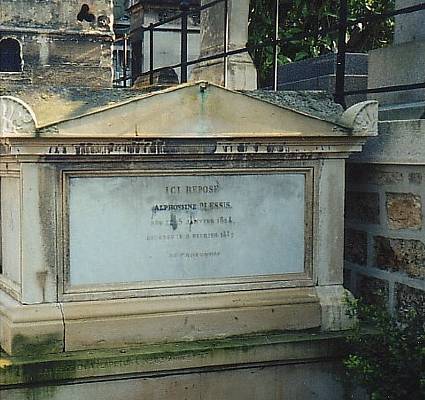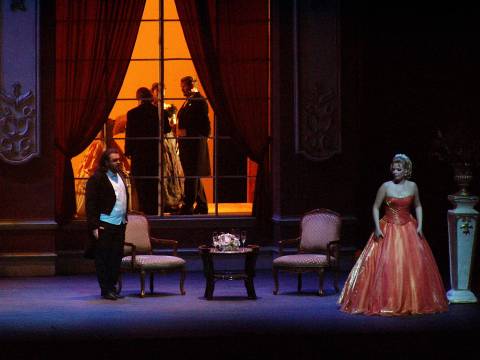|

Expansively Romantic
Teatro Lirico d'Europa's 'La Traviata',
appreciated by MARIA NOCKIN
In January 1853, Giuseppe Verdi wrote to his friend Cesarino de Sanctis: 'For Venice I am writing "La dame aux camélias" ... a contemporary subject. Another composer might not want to deal with it ... but I am doing it with the greatest pleasure.' He knew that the play by the younger Alexandre Dumas had been a succès de scandale in Paris. In that same letter he went on to say that although people were horrified at his portraying a hunchback on stage, he was happy to have composed his recently triumphant piece for Venice, Rigoletto.

The tomb of Alphonsine Plessis, the woman on whose life the story of 'La Traviata' is based. Photo © Eskicioglu
|
Dumas had based an 1848 novel and an 1852 play on the life of the famous French courtesan, Alphonsine 'Marie' Plessis who lived from 1824 to 1847. A one time friend of the author and of Franz Liszt, she had also been the mistress of some of the richest men of the era.

A scene from the Act 1 of Teatro Lirico d'Europa's 'La Traviata' at Newark, with Evgeny Akimov as Allfreo and Marina Viskvorkina as Violetta
|
Verdi's opera was composed during January and February of 1853 and received its première at La Fenice in Venice on 6 March of that year. He was not happy with the cast and the singers did not do his work justice on that occasion. As a result, the composer made considerable revisions in Acts II and III before the next performance which was not given until 6 May 1854.
Continue >>
Copyright © 2 April 2006
Maria Nockin, Arizona USA

|

